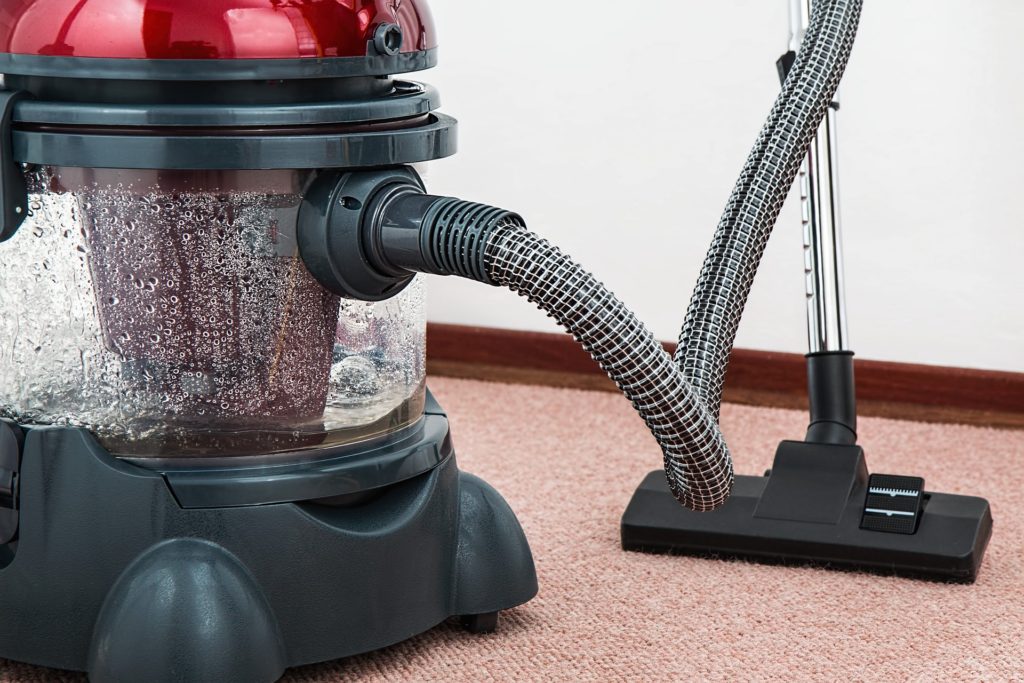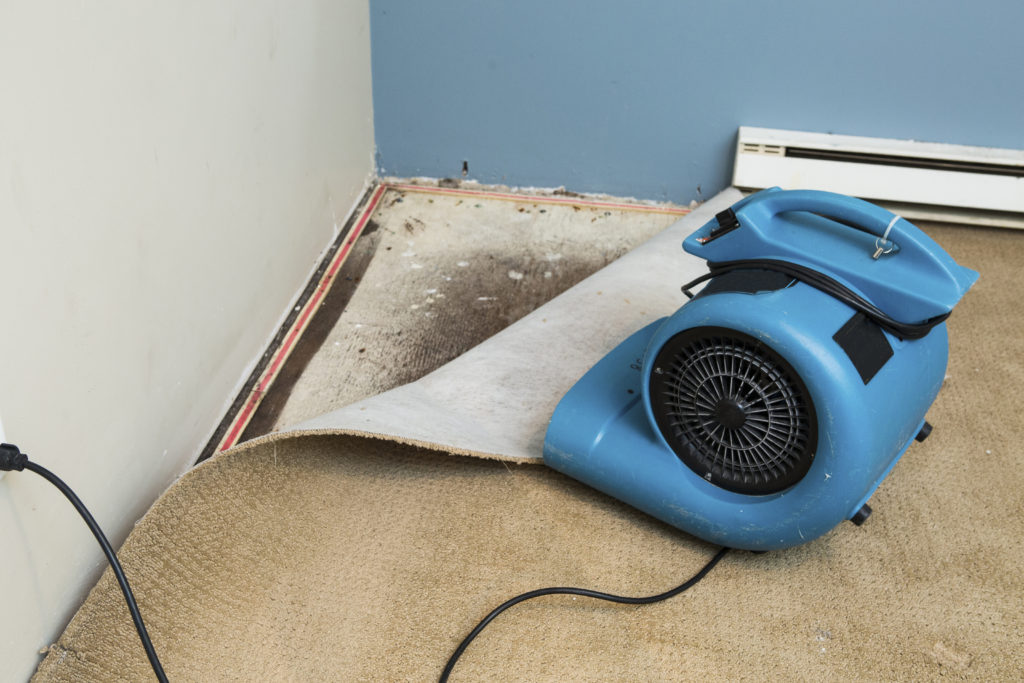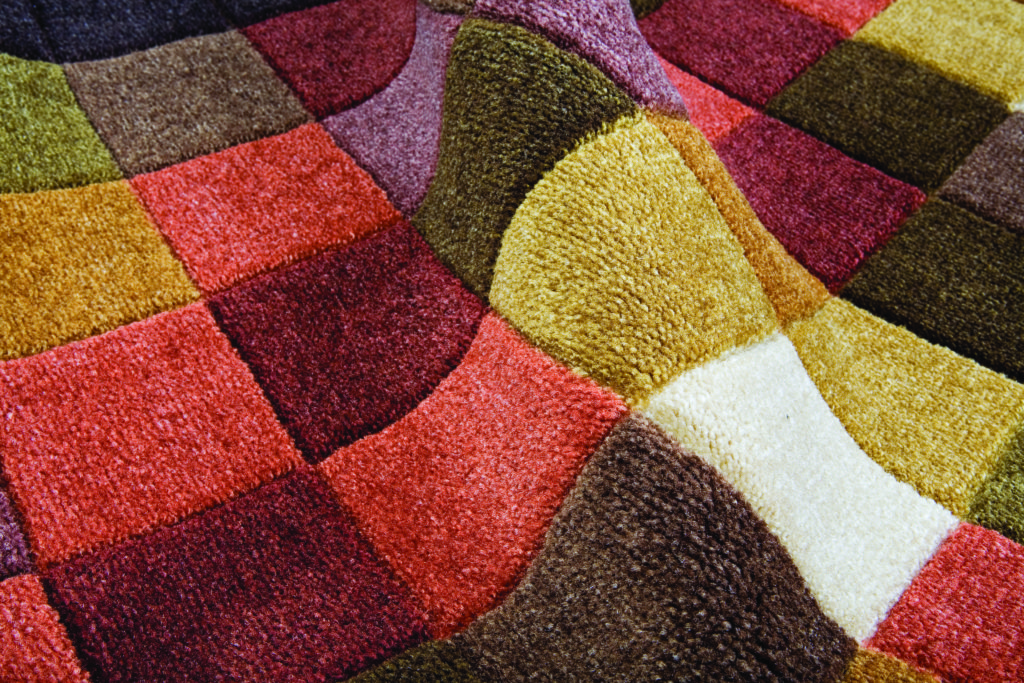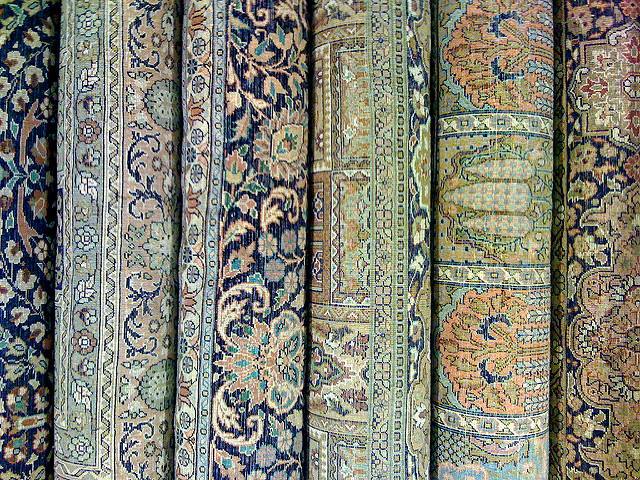Winter weather can mean frozen pipes and ice damning. These can lead to water damage, leaving your carpets soggy and prime for mold, but we can help! Our team of experts is ready to assist with remediation of flood and water damage, or smoke and water damage after a fire.
Caring for Your Area Rug | J & S Steamway | Carpet Cleaning Anchorage
You invested a lot in your area rugs. Make sure that the folks that are cleaning them know what they are doing. Our team has the training and experience, we can handle even the toughest job. Give us a call at 349-0911.
Carpet Cleaning Myths | J & S Steamway Carpet Cleaners, Anchorage
Do you know the difference between a spot and stain when it comes to your carpet? Troy visited with Renee Scott with Channel 2 News, KTUU.com to explain the difference. Take a few moments to make sure you are cleaning the spot and not making it worse. Watch here to find out how to treat spots and stains.
Chemistry of Carpet Cleaning | J & S Steamway | Anchorage Moms Everyday
Cleaning carpets is about more than vacuuming. There is a lot of chemistry at work when it comes to properly caring for area rugs and carpets. Our team has the education, training and experience you should trust. Anchorage KTUU Moms Everyday. Watch here to hear the full story.
What to Do With Water Damage
Water Damage
No one wants to come home to water damaged carpeting. Whether yours is wet from a busted up laundry room pipe, the mounted fire extinguishers going off, or damage after a flood, it can be hard to tell what to do with your carpet after it has sustained water damage. That’s where our expertise comes in. If you’ve ever wondered what to do with your carpet if it’s damaged by water, read this post now so you’ll know what to do when you have to act later!
When you’re making decisions about your carpet in the event of water damage, you basically have two options. They are:
- Option #1 – Attempt to restore it. Of course, the first thing you’ll want to do with your carpet is to restore it like nothing happened. This is quite possible to achieve, and J&S Steamway helps homeowners do this every day. In order to properly restore your carpet, however, you’ll need to follow these specific instructions:
- Get to your carpet right away. Mold spores can grow in as little as 48 hours after the incident and impact your family’s health.
- Remove any standing water and peel back the carpeting. Open any doors and windows to let the air circulate into your home.
- Contact a professional water restoration service (like J&S Steamway) right away to deal with the cleanup process.
- Option #2 – Get a new carpet. In some cases your carpet may be beyond saving and it’s best to just replace it instead. How do you know when you should replace water damaged carpeting? The examples below are good indications:
- Your carpet has been submerged in water for 24 hours or more.
- The carpet was contaminated by flood water that might have had sewage in it.
- The carpet padding underneath was thoroughly wet from the water. Wet carpet padding is difficult to clean and likely needs replacement.
Whether your carpet is restored or gets replaced, timing is critical with water damage. Contact your professional carpet cleaner as soon as the event is over to dry things out quickly and have the best chance of saving your carpet – and your home – from further damage.
Need more help troubleshooting water damaged carpet? J&S Steamway is a licensed professional in fire, water, and flood damage restoration. We’ll help you get things in your house back to normal and in order when disaster strikes. Serving the beautiful Alaska area for over 40 years, we take pride in caring for our customers’ carpets as if they were ours. Contact us today to receive a free consultation on your carpets or ask us any questions about your specific carpet care needs!
How to Tell If You Can Restore Your Carpet
How to Tell If Your Carpet is Spent
When a carpet is water damaged, it is crucial to act as quickly as possible to prevent further damage to property and to avoid creating a health hazard. Mold grows out of control very quickly. If you are returning to a flooded home after 48-72 hours have passed, it is important to wear a respirator to prevent mold spores from getting into your lungs. First, remove any water that you can. Then, you must pull up you carpet, or any other flooring, to dry your sub floor. Open windows and use fans to get air flow. It is necessary to completely clean the carpet to prevent mildew and odors. While bleach is considered a good disinfectant, it can damage some carpets beyond repair.
Not all carpet can or should be saved after being water damaged. The severity of the situation depends upon where the water came from. A busted pipe causes less contamination than a busted dishwasher or toilet. Flood water coming in from outside the home is always particularly dangerous due to high levels of bacteria. If your carpet has been damaged by flood water that may have been contaminated with sewage, you must discard and replace the carpet for health and safety reasons unless it can be professionally disinfected. Carpet that was completely submerged for more than 24 hours should also be considered contaminated even if the water was from a clean source. The padding under the carpet cannot be easily cleaned and will need to be replaced.
Why should you hire a professional for carpet restoration?
- Finding and eliminating hidden moisture requires special equipment. Because it takes only 48 hours for mold to grow and become problematic, carpets need to be thoroughly dried very quickly.
- Preventing mold growth is crucial to you and your families health. Breathing in mold spores is dangerous. Without professional evaluation, you might have mold that you can’t see.
- Drying the water damaged floor with professional speed can prevent costly damage to your subfloor. Otherwise, you could be waiting months for your subfloor to dry completely to put carpet back down.
- Disinfecting the carpet with professional products and equipment ensures that bacterial and fungal contamination is completely eliminated.
Time is critical when it comes to carpet restoration so contact a professional immediately for the greatest chance of success.
Our Thorough Rug Restoration Process
A quality rug is an asset that can last a lifetime and breathe life into your home. Thorough rug restoration is an important way to repair and preserve your valuable rugs. Restorations are done to clean, repair, and to help your rugs to last as long as they should. Here is a comprehensive list of the steps and processes we use when we restoring your rug.
Dusting-
First, we remove dry soil particulates using compressed air. This is a safe and thorough technique for pre-cleaning your rug. The rug is treated with our percussion machine to remove fine dust and particles. This process loosens the surface dust from the rug fibers. Then, a wand tool will be used to drive compressed air through the fabric of the rug. This removes more deeply embedded dust and particles, which household vacuum cleaners are not able to remove.
Washing-
A professional hand washing treatment in a submersion bath guarantees you that your rug receives a thorough cleaning. The rug will be saturated with purified water before being treated with a wool-safe cleaning agent. Our specialized machines gently agitate the rug fibers removing dirt and grime. Then another application of compressed underwater air creates a Jacuzzi like action for gentle agitation.
Decontamination-
Contaminants such as mold, urine, mildew, old food particles and insect inhabitation can cause hard to remove odors. Natural fibers especially require a complete decontamination as they are much more prone to developing mold, mildew, and to attract insects.
Rinsing-
At this point, we can completely wash away remaining soils, and contaminants while our gentle cleaning agents work to achieve a level of cleanliness where drinkable water can now be passed through your rug. The knapp will then be brushed to preserve your rug’s softness during the drying process. The fringe, should your rug have one, will also be completely brushed out during rinsing.
Drying-
Drying must be done quickly and efficiently to avoid further contamination. This is achieved by using a special drying environment with a carefully controlled atmosphere. Your rug is then placed in our specialized dryer. The dryer is sprayed with clean water until all of our cleaning agents have been removed and the rinse water presents as clean and clear.
Follow up detailing-
A final spot cleaning will be performed to remove any remaining foreign matter or stains. Special care is taken to extract this foreign matter without damaging the fibers of the rug.
Repair and restoration-
Our highly skilled rug crafters will then meticulously re-weave any damaged portions of the rug. This is a painstaking process in which we take a great deal of pride.
Replacing underlayment-
We can also provide a protective dual purpose underlayment that will protect your rug on all surfaces. Call J&S Steamway today 907 349-0911
Oriental & Area Rug Cleaning
You have invested in a beautiful, artistic rug to serve as the focal point of your guest room or living room. As gorgeous as this piece may be, it is going to eventually need maintenance! People are going to walk on it, mistakes are going to happen, and the natural wear and tear of daily life will reduce the quality of your rug without professional help.
The process of properly cleaning a rug is a bit more complicated than a wash and dry cycle. In order to maintain the day one look of your rug, you will need professional tools and a steady hand to operate them.
The cleaning process will change depending on the materials that your rug is made from – wool, cotton and silk are cleaned slightly differently in order to preserve their original look. Special cleaning products that are less abrasive than over the counter detergents help to ensure that the color of the rug is preserved while lifting dirt and grime from the materials. A professional cleaning also uses a process that does not allow dirt and sediments to attach themselves to the rug after the wash cycle. This helps your rug to stay cleaner for a longer period of time.
Getting your rug cleaned on a consistent basis helps to do more than keep up the look of your home. Rug cleanings help to remove allergens from the home, and the small bugs and parasites that naturally make their way into your home will find a home in your rug if you do not clean it consistently. A good, consistent cleaning will also ensure that any big spills do not fully embed themselves into the architecture of your rug.
If you are in Anchorage, then J&S Steamway is the carpet cleaning company that can help to preserve and beautify your home. Give us a call us today! 907 349-0911
Resource Guide
Resource Guide
Special Report #1
Ugly Black Lines Along My Baseboards and Under My Doors
If you have light-colored carpet, you may have experienced dark lines that appear on the carpet. This soiling is called filtration soiling because it comes from air passing through the carpet as it is attempting to get through the crack between the carpet and the baseboard.
As the air passes through the edge of the carpet pile, microscopic soiling is deposited there (hence the term filtration soiling). This occurs over a significant period of time and is not noticed until a buildup has occurred.
This type of soiling is difficult to remove because the soil particles are so fine that they penetrate deep into the carpet pile, even sometimes into the backing of the carpet. Can filtration spoiling be removed? Sometimes. With special products, time, and effort, reasonable results can be achieved.
To help prevent filtration soiling, vacuum and wipe the edge of the carpeting on a regular basis. Be careful around the tack-strip on the edge of the carpeting; it could nick your fingers!
Special Report #2
Cleaning Raw Plant Material
Jute, sisal, sea grass, coir and hemp are names associated with floor coverings made form raw plant materials. Ranging from mats to wall-to-wall, some with backings, some without, this type of material is in a very raw state. Therefore, an understanding of how the fibers react to everyday soiling and how they respond to cleaning is helpful. One of the unique characteristics of this type of floor-covering material is the tendency to develop mysterious dark spots when cleaned, regardless of the method used. Generally, efforts to bring a “worn” sisal back to its original state are a lost cause. Also, sisal stains very easily. One of the best things to do is have a protected with a solvent-based fabric protecter, providing some resistance against spots that result from any type of spillage. In addition to developing dark spots, sisal may also “lighten” when cleaned. The best way to clean plant materials is with a low-moisture approach. The bottom line is that these products are not very spillage, traffic or cleaning friendly. However, you can’t beat the look.
Place this type of floor coverings in non-traffic, non-spillage areas to prevent over use. Have a light, maintenance cleaning done about once a year to remove surface soils, pollen, asphalt, exhaust, and other foreign matter that finds its way into our homes.
A final note about sisal: some wool carpets come in a “sisal style.” These products are made to look like sisal, but are actually an entirely different material.
Special Report #3
What Carpet Fiber Should I Choose?
When purchasing a carpet, the biggest questions is, “how long will it last?”
In asking that question, one must consider the clean-ability of that particular carpet. Even though the construction of the carpet plays a significant role in the life of the carpet, the fiber type is extremely important.
Before getting into this report, let it be made clear that this advice is NOT to override the recommendations of your carpet retailer. This report simply states some of the characteristics of three fiber types commonly used in carpeting, in order to provide an understanding of how fiber plays a role in soiling and particularly in wear.
There are many fiber types used in carpet manufacturing; however, for the purpose of this article we will focus on the three main players.
Olefin has become extremely popular in recent years. The first attraction to olefin is the price. Olefin is generally-although not always- less expensive than other fibers. The second appeal is that this fiber will not absorb any liquid. If you were to take a yarn from an olefin carpet and place it in a glass of water the fiber would float on the top of the water. Nylon and wool would not, since each would absorb a certain amount of water. The point is this: when something is spilled on olefin carpet, it will not be absorbed into the fiber. The value is that permanent staining from spillage is reduced. In addition, olefin carpets are solution dyed, which means that the color is introduced into the molten plastic before the fiber is made.
The characteristic of being non-absorbent can present unique cleaning challenges. Sometimes when spillage occurs, it runs down the side of the yarn into the backing of the carpeting. Many times this can cause wicking problems as the spill gets trapped in the backing of the carpet and is not effectively removed. Therefore, it continues to wick up the surface over time. In addition, if an inexperienced carpet cleaner leaves too much liquid in the carpet after cleaning, it simply slides down to the backing of the carpet with the soils, and as the carpet dries, it wicks back to the surface.
The second challenge with olefin is a characteristic that is often over-looked: Olefin fibers are less resilient than others. What that means in plain and simple terms is that when a fiber is crushed, it doesn’t “bounce back” as well as other fibers. It also “scratches” very easily. A very common occurrence with olefin installations is the traffic areas begin to look dingy or worn. In fact what has happened is the fibers have been scratched from foot traffic. Imagine a plastic toy that has a scratch on it: there is nothing you can do to remove that scratch. It’s permanent. The same is true of an olefin fiber-once it is scratched, nothing can be done to correct it. In high traffic area, the carpet may appear completely different then the edges against the wall.
The third interesting characteristic of olefin is that it is an “oil-loving” fiber. In other words, in the same way that is repels water-based soils, it absorbs and accepts oil-based soils, making it difficult to remove common oil-based soils in a household, such as lamp oil, lotion, body oils, and cooking oils. This can be especially important to keep in mind when choosing covering for floors just outside a kitchen area. Some of the higher-quality carpet mills “scour” the olefin to attempt to reduce the oil-attracting properties. Our company uses special cleaning agents manufactured for effectively cleaning olefin carpets.
Nylon has definitely been the most widely used fiber in the residential environment, and for a good reason. Nylon is very resilient, has good dry soil resistance, and doesn’t present as many cleaning challenges.
Nylon is also very resistant to spillage. Since most residential nylon is not solution dyed, but dyed after the carpet is made, it is not impossible to stain; however, if the spot is attended to in a timely manner, one can expect excellent spot removal results. Residential nylon carpets are also treated with a fluorochemical such as 3M Scotchgard or DuPont Teflon which helps tremendously with dry soil resistance and stain resistance.
According to a Consumer Reports article in the August 1998 issue, branded nylons performed better than non-branded ones.
Wool is more resistant to foot traffic than any other fiber. This is the reason that you see Oriental rugs that have lasted for so many generations. Wool hides dry soil naturally and is not adversely affected by it for quite some time. Another wonderful aspect of wool is that it is a great insulator. In the winter your home will be warmer inside and in the summer it will be cooler. However, the cheaper wool stains easily and may not be the choice where children and pets are present.
Carpet Color Restoration
Color Restoration
Maintaining the proper care for your carpet requires care and time. J&S Steamway Carpet Cleaning not only advises their customers as to what damages their carpets but also explain how they will restore your carpets to their natural color. Here are four steps to get you started:
- Banish Dirt
- DIY Correctly
- Clean Messes Immediately
- Hire a Pro
To keep your carpets from getting too dirty use mats inside and outside the threshold. Dirt becomes embedded into your carpet when you walk on it. Use your vacuum cleaner to get off the top dirt. When the dirt begins to make brown stains on the carpet it is time to call an expert.
Maintaining the color and cleanliness of your rug is a top priority. Light cleaning can be done yourself provided you use the right tools and solutions correctly.
Stains should be removed right away before they soak into the carpet fibers. Depending on the strength of the stains, Kool-Aid, pet stains, coffee stains, etc. you may have a real problem on your hands. Bleach discolors your carpets as well. This causes pale yellow or orange spots on your carpet.
J&S can restore your carpets color to its original, vibrant color. We have a variety of colors and shades that will get your carpet looking brand new. Or, if you want a completely different color change we can do that too.
We provide:
- Carpet Stain Removal
- Carpet Color Restoration
- Carpet Dyeing
Carpet Stain Removal
We don’t consider stains just uneven color, we consider them to be color issues. We can guarantee that stains and discolorations are removed from your carpet for good.
Color Restoration
Carpet discoloration can result from overexposure to sunlight, chemical spills or fade spots from furniture or over cleaning. We can find the perfect color match no matter what shade or tone your carpet is at present.
Carpet Dyeing
We are expert at coloring a variety of rug makes with intricate patterns such as Persian and Oriental Rugs for example. You don’t have to live with unsightly and unfashionable carpets with outmoded colors. Our services also extend to adding runners to your hallways and any other high-traffic areas as well.
At J&S, we provide quality service and are experts who have restored hundreds of wonderful rugs of all grades and makes. Our custom airbrushing tools create beautiful artwork to achieve new decor. All our solutions are environmentally friendly and non-toxic. Our dyes are guaranteed never to fade and the rug coloring process dries so fast you will be able to walk on your rugs within the same day.
There is hardly another company that can match our services and standards in rug cleaning and dyeing. Call us today to schedule your appointment! 907 349-0911





